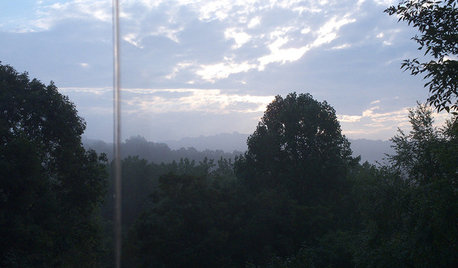Been reading quite a lot on the various methods of raising composting worms. There are literally tons of great information on raising worms which has been a huge help in getting an idea as to what their needs are and how to successfully raise them.
For my own needs creating a growing population and method of distributing them around the new garden beds was the priority. We have a few acres of sand with very little in the way of soil life and have not gardened much beyond the few small plots until this last year, suffice to say caught the bug and plans are ramping up for next year.
Early this summer I purchased a few thousand European Nightcrawlers which the worm folks here know are not actually nightcrawlers but more of a composting worm like the red wiggler but much larger. Much of what I see indicates these types of worms live only in the mulch layer at the top of the soil but I have found them quite deep in the soil of my pit compost/worm bin. We dig in a lot of yard debris and kitchen scraps there so the sand is actually starting look fairly decent there.
Many of the worms purchased went there and the rest were scattered among trees, plants and the lawn. After spending a couple hundred dollars on worms hopes were high that they were settling into this climate and reproducing, lately this has been confirmed by finding many egg cases and of course small worms that could have only come from the large ones placed around the property.
One location where they seem quite content is in the comfrey patch we planted this year, this was also fed and mulched recently so it should provide warmth and food to keep them active through the winter.
The other place where they are really showing up strong is in the compost pile mentioned above and the subject of this post so I suppose I should get to it.
I had been thinking about ways to be able to collect castings and worms from this area to distribute to other parts of the property especially the gardens next spring. Using one of those compost sifters it seemed like a good way to make a worm trap since the wire bottom would allow them in and the whole thing could then be taken somewhere else worms, castings and all.
I put a layer of kitchen scraps into the sifter after placing it flat on the soil then covered it with some well aged wood chips. This was shaded by a huge volunteer cherry tomato that grew there this year and stayed wet using spray emitters set up to both keep the pile and the adjacent chicken pasture watered.
After a couple of weeks it was time to check progress. It was quite pleasing to find the scraps just about completely consumed but also in their place egg casings and castings along with a multitude of very healthy looking worms. This all went into a new garden bed that was recently set up for some winter greens and fingers crossed that the worms like their new playground.
This all leads to more thinking about how to create a more viable system of processing the scraps over time, especially considering the cold weather coming. Taking a five gallon bucket I drilled 15 or 20 3/4" holes in the bottom and a few smaller holes up near the top for ventilation. In the bottom I put in some 1/2" hardware cloth, this probably wasnt needed but I thought it might help hold things in better later on when moving or soaking the castings for worm tea.
The bucket was loaded with shredded cardboard (well wetted) layered in with kitchen scraps and straw from the chicken run piled up around it. Over the next two weeks was pretty much filled up in the manner. Last time I added scraps I poked around a little to see how things were going and it didnt look good. It seemed as though it was much too wet and not nearly enough bedding for the amount of scraps. Obviously I needed to expand if this was going to keep up with rate we were emptying our kitchen scraps bucket (plastic folgers can).
Today I added two more five gallon buckets to the lineup and divided the contents of the first bucket among them along with loads more torn up moist cardboard. Again it was a pleasant surprise to find down in the bucket that even though it was quite wet (too wet I believe) there was a good number of worms in varying sizes and more egg cases.
Having more buckets to spread the fresh scraps out into will make it easier not to over feed the worms. The compost/worm bin is about 4' x 10' so there is plenty of room to continue adding more buckets as needed, come spring these will be distributed around the garden.
My thought here is that as the food is depleted in each bucket the worms will finish the vermicompost and leave through the bottom of the bucket into the surrounding garden. I imagine the will actually begin venturing out and back even before it is finished carrying nutrients with them depositing them along their path. Once finished the castings can be collected and the bucket placed back on the worm bin with fresh bedding and put back into the feeding rotation.
Nearest I can across to this was 'Free range worms' but it seems most of those folks buried the bucket. I imagine this would help with temperature and might be one thing that will have to be dealt with when the heat of summer comes. Hopefully there will be some grown in places offering some shade for them before the heat really hits as I dont really want to have to dig a hole each time I want to move a bucket to a new area, if not then they can simply be dumped and spread which might turn out to be the better option if SWMBO doesnt like all the orange Homer buckets in her garden ;)
Any way it works out it looks like things are coming up roses and the money spent on the worms by all accounts should be well worth it in the end. Count me as an enthusiastic new worm wrangler who would love nothing more than to transform this desert environment that is pretty much devoid of life into a lush place that is not only enjoyable to be in but also gives back to us. It all starts with the soil of course so thats where the focus is, since good soil needs worms even small successes here are quite exciting and seeing the changes and how rapid they take place with the worms working for you doubly so.
















mendopete
nexev - Zone 8bOriginal Author
Related Professionals
Tempe Landscape Architects & Landscape Designers · Arnold Landscape Architects & Landscape Designers · Wakefield Landscape Contractors · Cerritos Landscape Contractors · Cordele Landscape Contractors · Dedham Landscape Contractors · Florham Park Landscape Contractors · Fountain Valley Landscape Contractors · Goodlettsville Landscape Contractors · Roswell Landscape Contractors · Seminole Landscape Contractors · Country Club Hills General Contractors · Mansfield General Contractors · Merrimack General Contractors · Noblesville General Contractorsequinoxequinox
equinoxequinox
nexev - Zone 8bOriginal Author
chuckiebtoo
nexev - Zone 8bOriginal Author
equinoxequinox
nexev - Zone 8bOriginal Author
equinoxequinox
FrancoiseFromAix
nexev - Zone 8bOriginal Author
equinoxequinox
FrancoiseFromAix
mendopete
nexev - Zone 8bOriginal Author
nexev - Zone 8bOriginal Author
equinoxequinox
FrancoiseFromAix
mendopete
11otis
equinoxequinox
nexev - Zone 8bOriginal Author